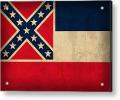

Originally Posted by
IditarodJoe

I seem to recall reading that, unlike Remington and Winchester 1917s, Eddystones are prone to problems when changing barrels - was it cracked receivers when removing the old barrel, maybe? I would welcome any knowledgeable discussion on this topic. I found the book "United States Rifle Model of 1917" by C. S. Ferris to be very informative.
I read that Eddystone was the only manufacturer to use a machine to install the barrels and the machine applied a much greater torque than what the guys at Remington and Winchester were doing by hand. Cracked receivers are a result of amateurs trying to remove them.
Phillip McGregor (OFC)
"I am neither a fire arms nor a ballistics expert, but I was a combat infantry officer in the Great War, and I absolutely know that the bullet from an infantry rifle has to be able to shoot through things." General Douglas MacArthur



 Reply With Quote
Reply With Quote




